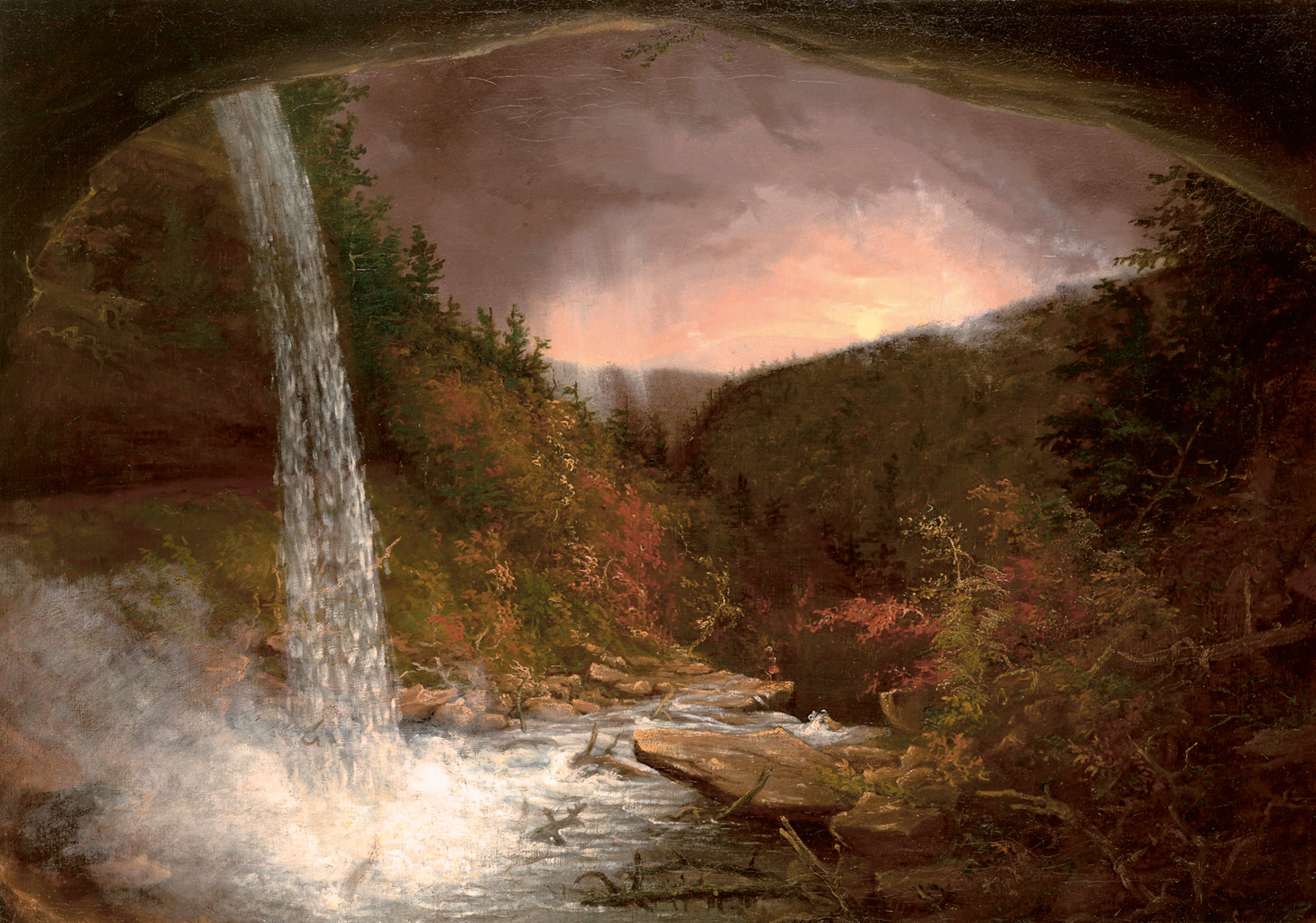From a “Wounderous” Place
Reading the rocks of Kaaterskill Falls
James Trainor

Oh Mercury! Scenery by the square foot! Sublimity by the Quintal!
—Willis Gaylord Clark, “Ollapodiana Number XXI,” The Knickerbocker or New-York Monthly Magazine, November 1837
• • •
Climb the dizzying heights of Kaaterskill Falls in New York’s Catskill Mountains today (and it is officially advised you do not; every year an ill-judged step, a foolhardy shortcut, or a miscalculated handhold brings news in local papers of yet another plummet) and you will discover the unheralded literature of this place. It lies in the open air, underfoot, a collective touchstone exposed to the windswept sky. Here, generations of people from every point of origin and avocation came seeking something and became the scriveners of their own presence, rubbing elbows across centuries in this stony acropolis of self-proclamation. Anthropologists of graffiti—who usually focus on the classical period or study contemporary urban examples—rightly talk about the tension between “self-fashioning” and the formation of “group identity.” Visitors to Kaaterskill Falls came to have an encounter with some epiphanic experience of the Sublime that was shaped both individually and culturally, and then chisel their way into it for good.
Together, these strangers and friends, loitering parties and lone ramblers, grandees and vagabonds—jostling, negotiating, whispering, bullying, conspiring, and coexisting over two centuries—constitute a milling tribe with its own codes and behaviors. In the hard bluestone slabs, polished stone basins, and boulders that form the banks of the creek that rushes over the falls are countless eddies of letters and numerals, orphaned punctuation and competing names, all rammed together and swelling into a chorus: “Me, me, me! I was here! I am here! I will always be here!” These are the homespun epitaphs of adventurers and pilgrims who are now mostly dead and gone, buried elsewhere under perhaps more formal yet less appropriate stones. It was here that these visitors—first a trickle, then the torrent that came with mass-tourism—chose to immortalize themselves with their own hands, in fits of rapture or awe, bravado or territorial one-upmanship. Why not commit oneself to eternity in this new Eden, a place so often described as the threshold of the infinite?